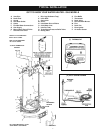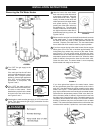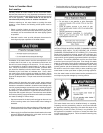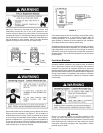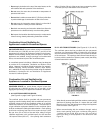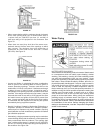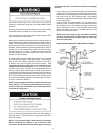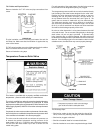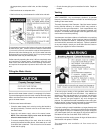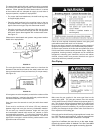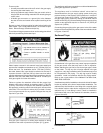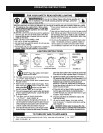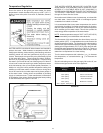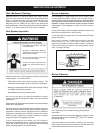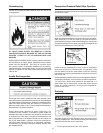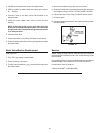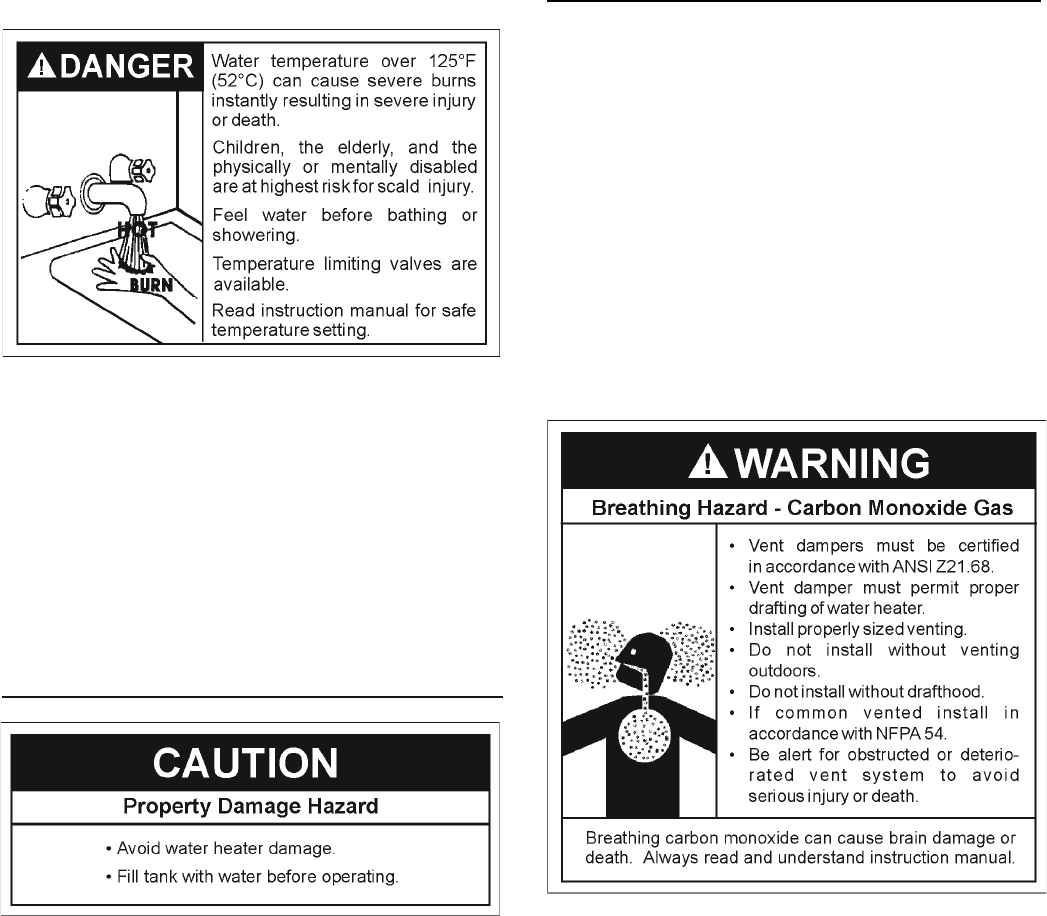
15
the temperature-pressure relief valve, and the discharge
pipe.
• Shall terminate at an adequate drain.
• Shall not have any valve between the relief valve and tank.
The temperature-pressure relief valve must be manually operated
at least once a year. Caution should be taken to ensure that
(1) no one is in front of or around the outlet of the temperature-
pressure relief valve discharge line, and (2) the water manually
discharged will not cause any bodily injury or property damage
because the water may be extremely hot.
If after manually operating the valve, it fails to completely reset
and continues to release water, immediately close the cold
water inlet to the water heater, follow the draining instructions,
and replace the temperature-pressure relief valve with a new
one.
Filling the Water Heater
Never use this water heater unless it is completely full of water.
To prevent damage to the tank, the tank must be fi lled with water.
Water must fl ow from the hot water faucet before turning “ON”
gas to the water heater.
To fi ll the water heater with water:
• Close the water heater drain valve by turning the handle to
the right (clockwise). The drain valve is on the lower front of
the water heater.
• Open the cold water supply valve to the water heater.
NOTE: The cold water supply valve must be left open
when the water heater is in use.
• To ensure complete fi lling of the tank, allow air to exit by
opening the nearest hot water faucet. Allow water to run until
a constant fl ow is obtained. This will let air out of the water
heater and the piping.
• Check all water piping and connections for leaks. Repair as
needed.
Venting
VENT DAMPERS - Any vent damper, whether it is operated
thermally or otherwise must be removed if its use inhibits proper
drafting of the water heater.
Thermally Operated Vent Dampers: Gas-fi red water heaters
having thermal effi ciency in excess of 80% may produce a
relatively low fl ue gas temperature. Such temperatures may
not be high enough to properly open thermally operated vent
dampers. This would cause spillage of the fl ue gases and may
cause carbon monoxide poisoning.
Vent dampers must bear evidence of certifi cation as complying
with the current edition of the American National Standard
ANSI Z21.68 (ANSI Z21.66 & 67, respectively, cover electrically
and mechanically actuated vent dampers). Before installation
of any vent damper, consult your local Sears Service Center or
the local gas supplier for further information.
To ensure proper venting of this gas-fi red water heater, the
correct vent pipe diameter must be utilized. Any additions or
deletions of other gas appliances on a common vent with this
water heater may adversely affect the operation of the water
heater. Consult your gas supplier if any such changes are
planned. For replacement heater installations where using pre-
existing venting, venting must be inspected for obstructions and
if deterioration is present, venting must be replaced.
For proper venting in certain installations, a larger diameter vent
pipe may be necessary. Consult your local Sears Service Center
or gas supplier to aid you in determining the proper venting for
your water heater from the vent tables in the current edition of
the National Fuel Gas Code ANSI Z223.1/NFPA 54.
Periodically check the venting system for signs of obstruction or
deterioration and replace if needed.
The combustion and ventilation air flow must not be
obstructed.



